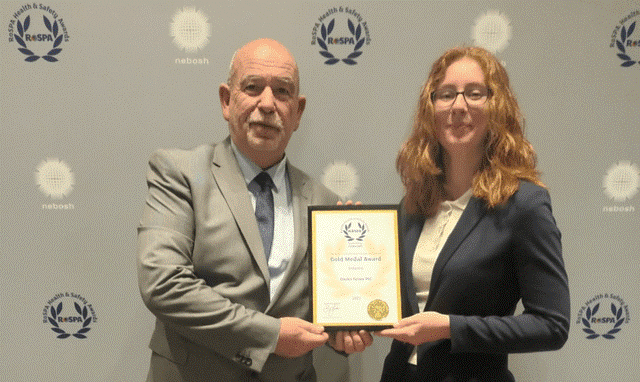One thing that is often forgotten about Customs Duty is that it is a bottom line cost on imported goods. And the thing to remember about Customs Duty is that any costs saved on imported merchandise means an addition to the bottom line. Conversely, there are always risks related to the import of goods because, if the duty rate selected is underpaid, there is the real risk that HM Revenue & Customs will be looking for three years back duty.
This unexpected demand can have a disastrous effect on a business – especially in these difficult recessionary times.
So, what are the main components that decide how much Customs Duty is due? Well, there are basically only four, which at least narrows the examination down a good deal. The four are: ‘What is it?’; ‘Where’s it made?’; ‘What’s it worth?’ and ‘Where’s is going?’. This article deals with each of these in turn.
What is it?
Imported goods are classified in the Customs Tariff and it is that classification number (Tariff Heading or Commodity Code) which drives the duty rate. There are some 15,000 separate tariff classifications and each and every item is classified once – and once only – within the tariff. Take a plush teddy bear – that has a classification of 9503004100 and a duty rate of 4.7% of the value. But what happens if the teddy bear can sing a couple of nursery rhymes? Is it still a teddy bear at 4.7% or is it a musical toy with a zero duty rate? How many songs make it a musical toy? How about a snow globe that plays the ‘Frosty the Snowman’ theme? Is this a musical toy? A Christmas decoration? A musical box? An item of polyresin? Or an item of stone? Or an item of glass? The duty rates amongst those range of products is zero to 11%. You don’t need to guess where HMR&C would want it classified. A plastic flying kite carries a duty rate of 4.7% – a textile kite is free of duty. What happens if the kite is a mixture of plastic and textile? So many questions and so many opportunities to save some duty costs – but so many areas of risk where things can go wrong. If duty has been overpaid, the reclaim can cover a three-year repayment claim. But by the same token HMR&C can hit an importer for three years underpaid duty. It is so important that the science of tariff classification is properly applied.
Where’s it made?
Imported products from China, USA, Japan, etc. invariably pay the full rate of duty. But some Far Eastern countries (for example Malaysia, Indonesia and Vietnam) have a preferential trade agreement with the EU. Products originating in a ‘developing’ country benefit from a reduced rate of duty when imported into the EU. So, for example, a plush teddy bear manufactured in China carries a 4.7% duty rate but an identical product made in Indonesia has a duty rate of 1.2%. The system is based on an origin document called a GSP Form A. This is completed by the overseas manufacturer and is authenticated by the Export Promotion Board in the supplier’s country. The problem is, of course, that there is no proper control on the issue of these origin forms so there is an inherent risk that a verification ‘mission’ by the EU Anti Fraud Squad (OLAF) might bring a back duty bill on the unsuspecting importer. There are ‘Good Faith’ provisions here, which can give the importer a measure of protection, but it is the importer who is responsible, totally, for Customs Duty issues. Risk or opportunity?
What’s it worth?
This is by far the most difficult question and is likely, over the next couple of years, to become even more complicated and tortuous. In basic terms, duty is charged on the C.I.F. (Cost of Goods + Insurance + Freight) value of the consignment. There are many, many nuances to what is known as Customs Duty Valuation. For example, if the importer uses the services of a Buying Agent abroad to acquire goods, check quality, arrange shipment etc, the commission charged by the agent can be excluded from the duty value. There are, of course, conditions.
Conversely, if the importer pays a Royalty or Licence fee related directly to the imported goods, HMR&C could try to say that the Royalty or Licence fee should be included in the value of goods being imported. This is an area that the EU Commission are currently looking at very closely because they see an opportunity to collect more duty to bolster the funds. Historically, HMR&C have taken little notice of Royalties and Licence fees but this position is likely to change – and soon. If this article generates no interest to an importer other than a review of Royalties and Licence and their relationship to Customs Duty, I shall be happy. This is a really complicated and risky area.
Where’s it going?
No article on the Risks & Opportunities relating to Customs Duty would be complete without a section on duty reclaim opportunities. If product is imported from outside the EU upon which Customs Duty is paid and then that product is re-exported outside the EU, the Customs Duty can be reclaimed. This duty reclaim is called Inward Processing Relief. The imported goods can be processed or incorporated into a finished product – the reclaim is still available. Neither does the exporter have to be the original importer of the goods as long as the duty amount can be passed on to the exporter. It is only the exporter who can claim the refund. Additionally, there is another duty relief opportunity called Customs Warehousing where imported goods are stored in an approved premises without the payment of Duty or VAT. If the imported goods are sold to a UK customer, Duty and VAT is then paid; if the goods are sold into the EU, duty is paid but not the VAT; if the goods are sold outside the EU, no Duty or VAT is payable. The question to ask is, “If I’m exporting products outside the EU, am I missing any duty reclaim opportunities?”
And what of the future? Duty rates are unlikely to change in the foreseeable future so if an importer has a good handle on the Tariff Classifications, then there’s a tick in that box. Similarly, preferential trade agreements are reasonably static – there will be some changes in the operation but not in the scope and coverage. As far as Customs Duty valuation is concerned, the future is certainly at risk – more duty is likely to be paid unless an importer takes measures to avoid this hit. Additionally, the EU Customs Legislation (known as the Customs Code) is undergoing a complete re-write. In the wake of the events of 9/11, the requirements for security of the supply chain has become of paramount importance. The unworkable (in my view) plan is that each and every part of the supply chain is approved by the relevant authorities. The procedure is known as Authorised Economic Operator (AEO) and the bureaucracy required for AEO approval is immense. It is uncertain how HMR&C will cope with the flood of applications bearing in mind the cuts in staffing levels. The target date for the changes was June 2013 but this is likely to be delayed until 2016. Another requirement will be the need to have a financial guarantee for the duty and VAT due on any goods stored in a Customs Warehouse. This is another imposition on UK businesses which has not existed previously.
So, in the world of Customs Duty, there are risks and opportunities both current and in the future. It is important that importers take steps to minimise the effect of Customs Duty and attention needs to be paid to the forthcoming changes in the EU Customs Legislation.
www.mikehodge.co.uk





